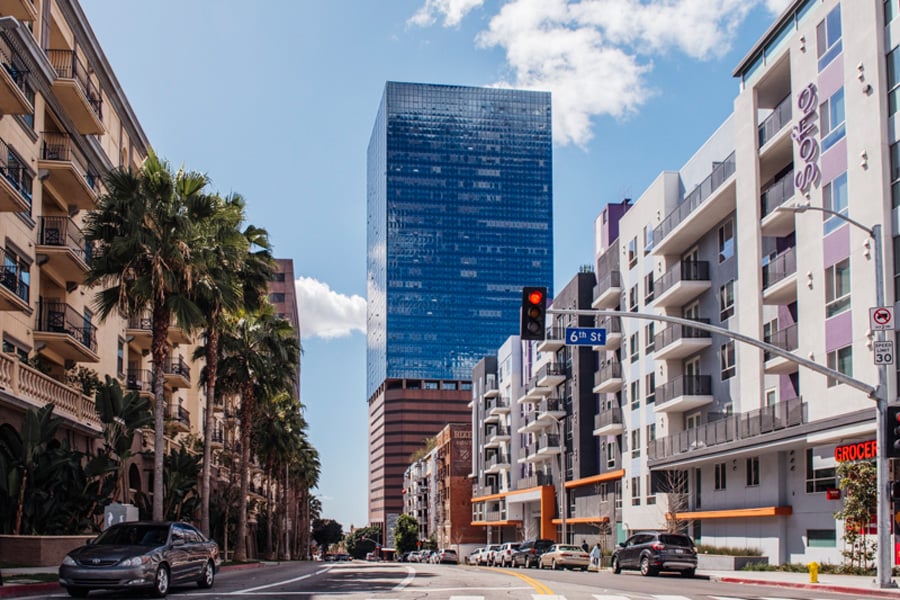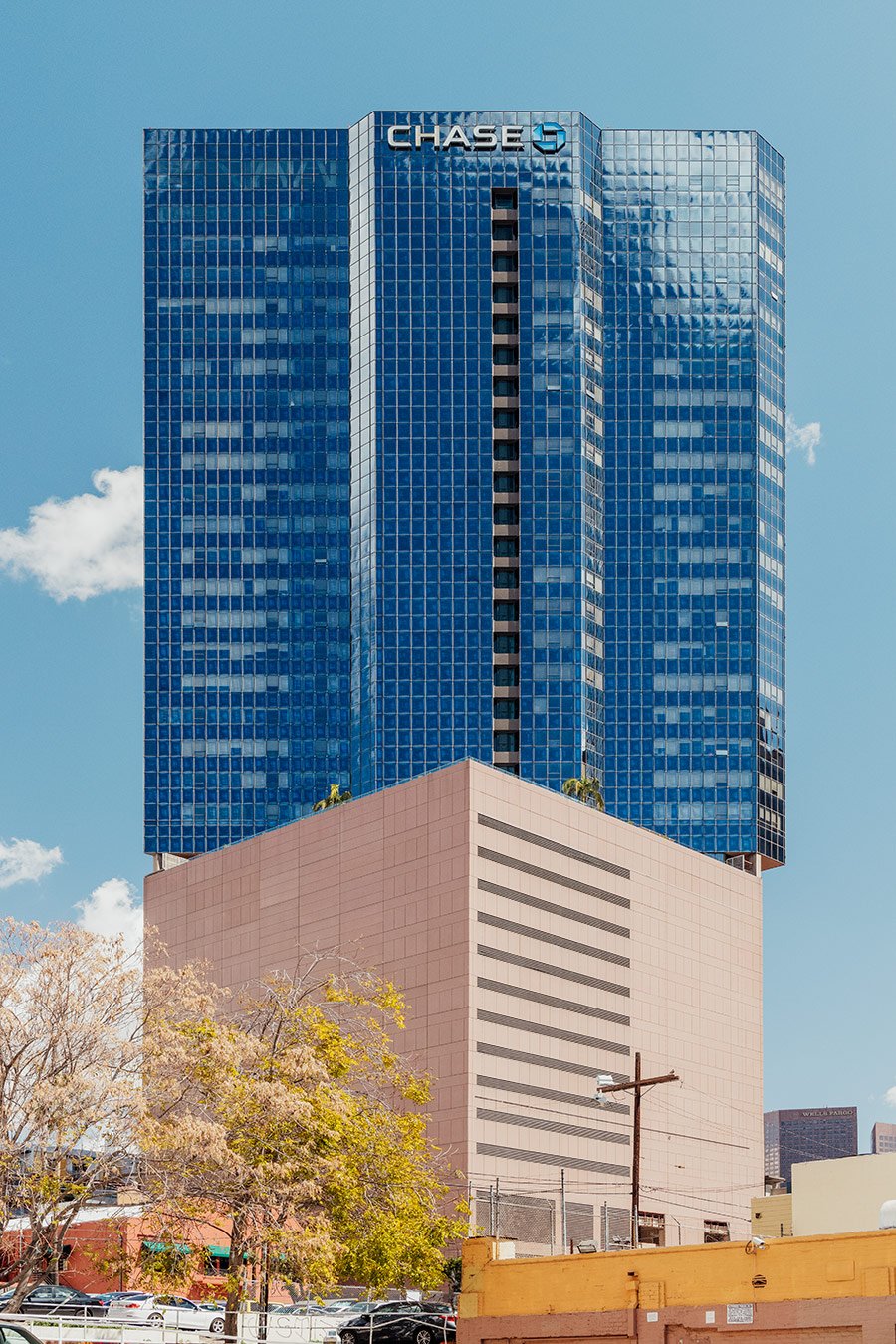
June 6, 2018
Surveying L.A. Pomo: AC Martin Partners
In this series of articles, Metropolis celebrates the diverse, innovative Postmodern architecture coming out of La La Land between 1975 and the early 1990s.

In this series from our May issue, we revisit the under appreciated architectural experimentation that characterized urban development in Los Angeles from the 1970s to the early 1990s, and discover a variety of individualistic, unconventional, and radical styles—some of which occasionally even approached “fun.” Stay tuned to our homepage as we add more entries!
With its asymmetrical form and complex materiality, 1100 Wilshire Boulevard reflects an interesting moment in the development of the Pomo aesthetic. The building, which opened in 1986, was designed by AC Martin Partners, although this statement of fact comes with two caveats: the architects’ disavowal of responsibility for the widely panned building in the decades following its construction, and the strong, guiding—and reportedly overbearing—hand its developer, Japanese-Chinese businessman Tsai Ming Yu, wielded in the design process.
The stacked design was apparently based on Tsai’s interpretation of traditional Chinese feng shui. Despite the architects’ insistence on modifying Tsai’s scheme to make it more marketable in an American business context (the triangular tower occupies only half of its maximum footprint), he was unwavering.
“We couldn’t believe he wanted us to do something this bad,” Christopher Martin of AC Martin told the Los Angeles Times in 2003. “We were severely criticized for attempting to change the design.” After being nearly vacant for a decade, the building was acquired for a measly $36 million by developer Robert D’Elia and converted into 228 luxury condo units—still its primary use today.
Despite 1100’s bizarre, self-conscious form and its fraught history of owner- ship and functions, its stacking of architectural volumes was radical for its time, employing a technique later used by the likes of OMA. The sheer dissimilarity, however, between the upper and lower volumes in terms of height, shape, style, and materials is matched only by a handful of later projects—Herzog & de Meuron’s expressionistic Elbphilharmonie in Hamburg, Germany, springs to mind. The building’s birth pangs and programmatic difficulties aside, 1100 Wilshire’s stylistic language and functional history can finally be seen as contextually contingent and architecturally prescient.
You might also like, “Surveying L.A. Pomo: Cesar Pelli.”
Recent Viewpoints
Viewpoints
Navigating the Path to Net Zero












